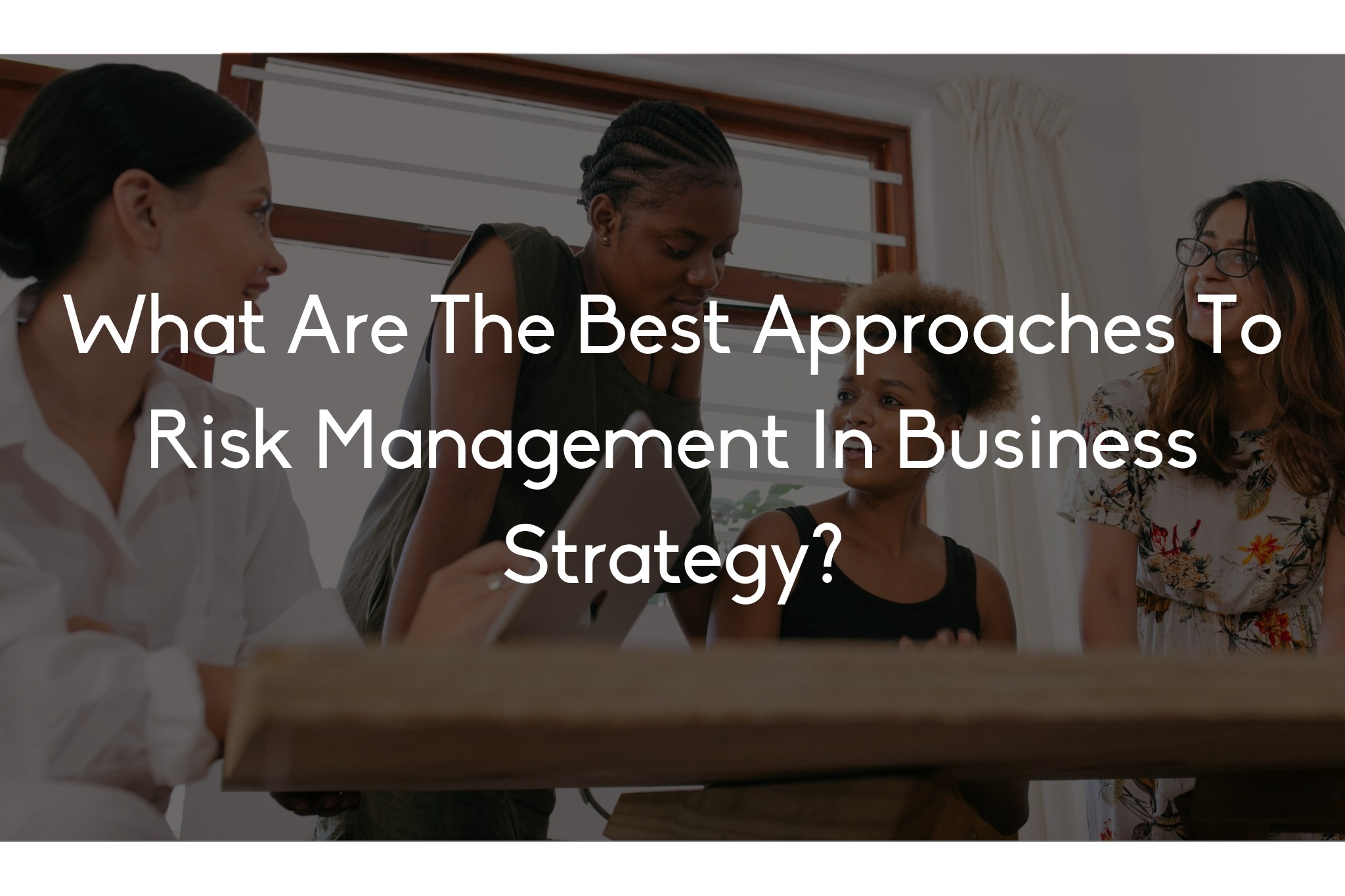
 Risk is something no business can completely avoid. Whether you’re launching a startup or steering a well-established company, risk is lurking at every corner. It’s how you prepare and respond to it that makes the difference. Managing risks isn’t just about putting out fires when they appear; it’s about being proactive and having a solid strategy in place. So, what’s the secret sauce to handling risks without losing sleep at night?
Risk is something no business can completely avoid. Whether you’re launching a startup or steering a well-established company, risk is lurking at every corner. It’s how you prepare and respond to it that makes the difference. Managing risks isn’t just about putting out fires when they appear; it’s about being proactive and having a solid strategy in place. So, what’s the secret sauce to handling risks without losing sleep at night?
The best approaches to risk management in business strategy revolve around a mix of understanding potential risks, preparing ahead of time, and having the right systems in place to minimise negative impacts. By recognizing the importance of risk management early on, businesses can ensure they’re not just reacting to problems but actively mitigating risks before they escalate.
So, where do you start with risk management? It can sound intimidating, but it doesn’t have to be. Below, we’ll walk you through the most effective approaches, covering everything from identifying risks to putting together a rock-solid risk mitigation plan. Let’s dive in.
It’s tough to manage something if you don’t know it’s coming. The first step to handling risks effectively is to identify them as early as possible. This might sound obvious, but many businesses don’t take the time to thoroughly assess potential risks until they’re knee-deep in problems. A well-structured risk identification process can save you a lot of headaches.
Detailed Answer:
The key here is to look at all aspects of your business—operations, finance, legal, marketing, and external factors like the economy. Ask yourself: What could go wrong in each area? Involve your team in this process, as they might spot risks you haven’t thought of. Use brainstorming sessions, SWOT analysis, and even customer feedback to get a clearer picture. The more eyes you have on potential risks, the better your chances of identifying them early.
Once you’ve identified potential risks, it’s time to assess them. Not all risks are created equal, so you need to prioritise them based on how likely they are to happen and the potential damage they could cause.
Detailed Answer:
Consider using a risk assessment matrix. This is a simple tool that helps you rank risks based on two factors: the probability of occurrence and the potential impact. A high-probability, high-impact risk should be at the top of your priority list, while a low-probability, low-impact risk might not need as much immediate attention. This prioritisation allows you to focus your efforts on the areas that need it most.
In this stage, also think about what resources you’ll need to handle each risk. Can your current team manage a financial hiccup, or will you need external help? Assessing your capabilities against the risks you face is crucial.
Now that you’ve identified and prioritised your risks, it’s time to come up with a plan. This is where the proactive side of risk management kicks in. A well-structured plan will not only prepare you for when risks arise but also minimise their impact on your business.
Detailed Answer:
Your risk management plan should outline the specific steps you’ll take when a particular risk presents itself. For example, if you’ve identified a potential supply chain disruption, your plan might include alternative suppliers or stockpiling essential materials. This planning ensures you can pivot quickly without missing a beat.
Break the plan down into manageable sections. Start with prevention tactics—what can you do to avoid risks altogether? Then, move on to mitigation—what’s your game plan if the risk becomes a reality? Finally, include recovery strategies—how will you bounce back once the dust settles?
And don’t just keep this plan in your head. Document it, share it with your team, and update it regularly. Risk management is not a set-it-and-forget-it task.
A lot of businesses overlook the importance of building a risk-aware culture. Risk management shouldn’t be a one-person job or something you only think about when trouble strikes. Instead, make it a part of your company’s DNA. Encourage everyone on your team to take ownership of the risks in their respective areas.
Detailed Answer:
Start by educating your team on the risks your business faces and the processes you have in place to manage them. Regular training sessions, open discussions, and clear communication are key to fostering this culture. When everyone knows what to look out for and how to respond, you’ll catch risks earlier, and solutions will come faster.
Also, create an environment where your team feels comfortable speaking up about potential issues. This openness can be the difference between spotting a risk early or facing a full-blown crisis down the line. A risk-aware culture leads to proactive risk management, which is exactly where you want to be.
 Diversify Your Business Strategy
Diversify Your Business StrategyThe old saying “don’t put all your eggs in one basket” rings true when it comes to risk management. Businesses that rely heavily on one revenue stream, one supplier, or one marketing channel are at higher risk. Diversification is a powerful way to mitigate potential risks.
Detailed Answer:
Diversification can come in many forms. If your business relies on one major supplier, find backup suppliers who can step in if needed. If you’re overly dependent on one customer segment, look for ways to reach new audiences. The goal is to spread out your risk so that if one area takes a hit, it doesn’t bring your entire business down.
The same goes for your marketing and sales strategies. Depending too much on a single platform, like Facebook Ads or SEO, is risky. What happens if there’s an algorithm change? By diversifying your marketing channels, you’re protecting your business from these kinds of external shifts.
In today’s business environment, technology can be your best friend when it comes to managing risk. Data analytics, for example, can help you identify trends, spot red flags, and predict potential issues before they arise.
Detailed Answer:
Risk management software can streamline the entire process of identifying, assessing, and mitigating risks. These tools give you a real-time view of where potential threats lie and how they could impact your business. From monitoring financial transactions to analysing customer behaviour, technology can give you the edge in staying one step ahead of risk.
Additionally, regularly reviewing your business data can reveal patterns that might otherwise go unnoticed. Perhaps sales in one region are dipping while competitors are gaining traction. This kind of insight allows you to make informed decisions before the situation escalates.
Finally, flexibility is key in risk management. Your business is always evolving, and so are the risks you face. Sticking to the same risk management strategy year after year is a recipe for trouble.
Detailed Answer:
Be ready to adapt and update your risk management plan regularly. Schedule quarterly reviews to assess whether your risk profile has changed. Maybe you’ve launched a new product, entered a new market, or adopted new technology—these changes often bring new risks. Staying agile ensures you’re never caught off guard.
The ability to pivot quickly when a risk materialises is what separates businesses that thrive from those that struggle to survive.
Risk management might not be the most exciting part of business strategy, but it’s one of the most important. By taking proactive steps—identifying risks, developing a plan, fostering a risk-aware culture, and keeping your strategy agile—you can turn risks into manageable challenges rather than business-ending disasters.
